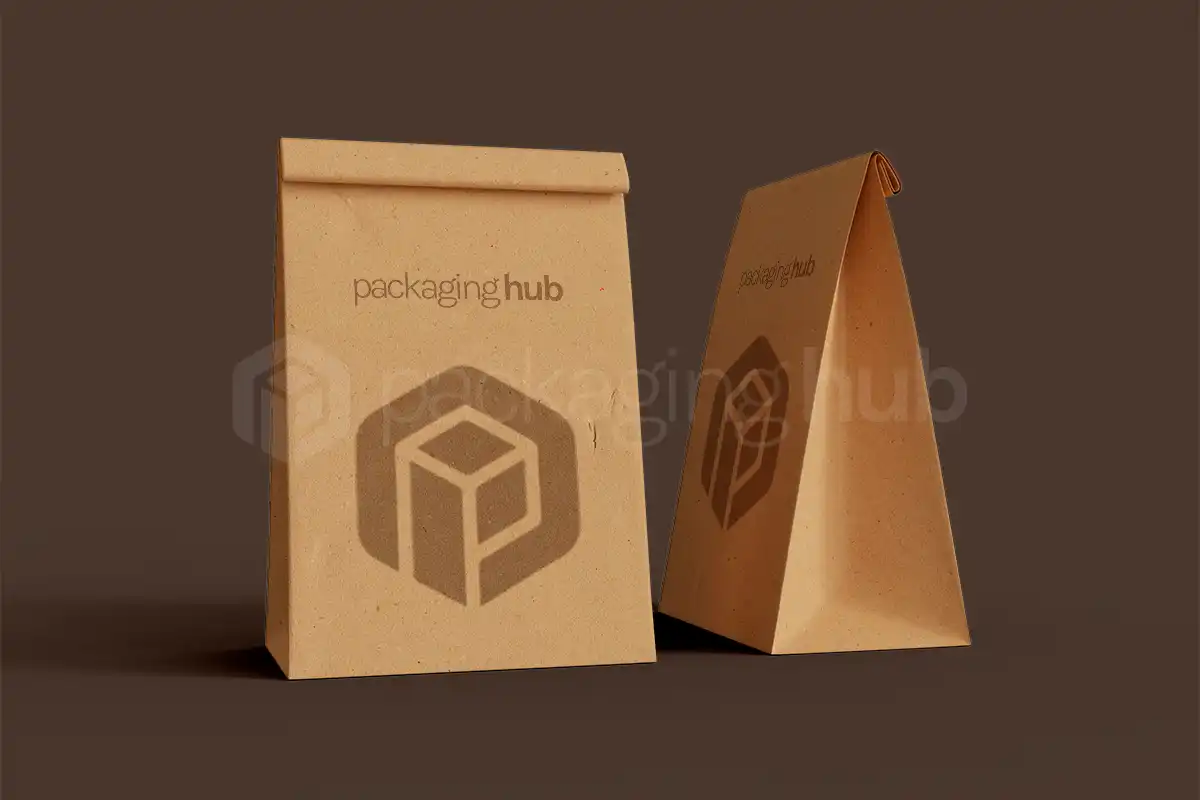Home » Blog » 7 Types Of Packaging Materials – Their Pros And Cons
7 Types Of Packaging Materials – Their Pros And Cons
Posted February 24, 2023

Last Updated on February 25, 2025 by Steve Harsh
Are you looking to find new materials to ship or deliver your products? One thing is for sure, the better you protect your product and make it look special, the more sales you can get. So, look for a material that suits your promotions and meets your needs.
Using the right materials for your custom packaging can do your job easily, so we keep them in mind. We will talk about the top materials you can try and give their pros and cons. You can find different types of packaging materials for the best protection, food items and fragile products.
Why Packaging Material Matters?
Before we dive into getting the best material for your packaging, there are multiple reasons you need to be sure if you are getting the right material or not:
- Your material protects your product from damage.
- This part of your product is the one that needs to be sustainable.
- Packaging is the first thing that attracts your customers into buying.
- If your packaging is low quality, you can not sell the product at a high price.
- It attracts your customer’s attention toward your product, making them buy it off the shelf.
So, if your products look special from the outside, you can make a better impression and more sales.
List of Top Packaging Materials
Now that you know why packaging material matters, we have a list of materials you can use for your products.
- Flexible Plastic Packaging
- Glass
- Kraft Paper
- Aluminum
- Shrink Film
- Skin Packaging
- Bundling Film
- Polybags
- Carded Packaging
- Flexible Pouches
- Foam
- Shrink Bands
- Roll Bags
- Strapping
- Plastic Bags
- Polythene
- Stretch Film
- Cardboard/Fiberboard
- Paperboard
- Paper
- Rigid Boxes
These are the most common types of packaging material you can find, so now we will talk about the best ones for every category.
Best Packaging Materials For Protection?
Regarding providing protection, we have multiple options for your packaging. For instance:
- Corrugated Inserts
- Bubble Wrap
- Packing Peanuts
- Paper
- Paper void fill
- Polyethylene Foam sheeting
- Packing Foam
- Block and brace
These materials have amazing benefits of keeping your products safe, so we will cover 4 of their pros and cons.
Paper Packaging Material
Paper packaging has pros and cons; still, you can rely on the protection you get.
Pros of packaging material:
- Paper is a natural and sustainable source that you can use for your packaging. So, any waste material from it would not be harmful normally.
- At the same time, you can easily recycle paper for later use.
- It is one of the materials that have high biodegradability. This means they will degrade in a natural condition easily and quickly.
- You can do a huge range of packaging things with paper material.
- Paper is among the materials you can reuse.
- Moreover, its production does not emit carbon dioxide.
- It is a material that is easy to print on.
- You can easily store paper packaging material, which is still less expensive.
Cons of paper packaging:
- It may not be a good material if you want a barrier from light or oxygen.
- The material is famous for being less durable.
- At the same time, it takes more space when you dump it as waste. This fact makes it more expensive to dump and get rid of.
- The material is known for being more expensive than plastic.
- Another con of paper is it will take more energy than plastic to manufacture.
- You may be able to recycle paper a certain number of times, but it won’t work every time you want.
- The paper also would take ages to degrade in an oxygen environment.
Bubble Wrap Packaging
Bubble wrap is another material you can count on for product protection.
Some pros of bubble wrap:
- You can rely on bubble wrap to save your product from shocks.
- Packing your products in bubble wrap will be easy; still, you can save much time.
- It offers your product to be wrapped with ease. So, your product’s shape does not matter; you can wrap anything.
- Using this material allows you to make things cost-effective as well.
- Your product weight matters a lot when you are shipping. So, you do not have to pay a lot for shipping products when you use bubble wrap.
- It is among the materials you can use multiple times without any recycling.
Cons of bubble wrap:
- Using this material for your products may take more time.
- Bubble wrap has issues when it comes to being flammable. Also, it can cause breathing issues if you burn it.
- You can only personalize your product partially when you use bubble wrap.
- Another thing to remember is that you may need help storing it.
- This material is not sustainable and biodegradable.
Packaging Peanuts
Packaging peanuts have its own benefits to make your products more protected. So, if you want to use this material, there are multiple benefits, like:
Pros of packaging peanuts:
- You can use it multiple times as the material is reusable.
- Using this material allows you to find cost-effective solutions compared to others.
- The material offers toxic-free packaging solutions that you can rely on.
- Packaging peanuts are more biodegradable, easing the environment.
Cons of packaging peanuts:
- This material may attract pests.
- Using this material can cause issues of dampness when used in humid conditions.
Types of Packaging Materials Used in the Food Industry
Food box packaging is one of the biggest sectors where we use this material, so we have some best choices.
- Glass
- Skin Packaging
- Metal Cans
- Clamshell Packaging
- Paperboard Boxes
- Cellulose
- Shrink Film
- Wood
Glass For Packaging
Glass is one of the best packaging materials for food, you can suppose. So, you can use it for multiple food needs, and you do not have to worry about it absorbing any flavor or smell. At the same time, it does not react with chemical materials, making it safe for food items.
When it comes to recycling, you can use glass recycling as many times as you want. In addition, you can recycle your glass containers, ensuring better results. Another thing to remember is glass packaging comes from more natural materials.
Glass is a material you can reuse multiple times without worrying about bad health effects.
Cons of Glass for Packaging:
- When it comes to transit, the glass may not be the right material due to its fragility.
- It takes a lot of energy to create glass. Its production takes a lot of energy, making things difficult for manufacturers and users.
- Regarding glass material, you need a sealing method for your packages. This is why you must spend more on the packaging, making things costly and difficult.
- At the same time, it would cost you higher to transport glass than other materials.
- Glass can be harmful when it breaks, so you can not rely on it because of its danger.
Tin Packaging
When it comes to packaging benefits of tin material, you can get some features that others won’t provide, like:
Pros of Tin Packaging:
- It is a material that weighs less than glass and other alternatives.
- You get amazing durability, and you get protection for your products as well. Such material would work when you have liquid products.
- Moreover, you can use it with attractiveness for your products.
Cons of Tin Packaging:
- When it comes to using tin, you can not utilize it for acidic products.
- Tin storage is a difficult task, so that you may need extra space.
Wood Packaging
Wood is an alternative way to package that works for food so well. So, if you need to find a material for your food items, here are some benefits it would help you with:
- Wood provides you with amazing strength and makes it more reliable. At the same time, it protects your food products with solid help.
- Wooden packages are more durable, which allows amazing transit ease for manufacturers.
- You can store the packaging without any stacking issues. So, when you put a wooden package over another, you don’t have to worry about their breakage.
- This material is eco-friendly and still does not cost a high investment.
Cons of Wood Packaging
- Wood packages can be difficult to store during transit when prepared as a package.
- Some wood material types can be costly, raising the overall amounts you spend on your packaging.
- When you use a custom wooden box, it would be useless once delivered. You can not reuse it, making it a waste for the earth.
- Storing such boxes can be difficult as you can only put a little weight on the bottom box.
Top Packaging Materials For Fragile Products
Packaging and delivering something fragile can be a real headache, so there are materials that work separately for this purpose. So, we have a list of these materials with their pros and cons:
- Void Fill
- Custom Inserts
- Shredded Paper
We know what materials work best for fragile products, so we will discuss the ones that stand out.
Void Fill For Fragile Products
Fragile products can be difficult to handle, but void fill keeps them in the right place. So, when you use them to fill spaces in your package, you ensure your products stay in the right space. This way, you allow them to get the protection of fixing them in a place.
So, they do not move in the package, and this way, they stay secure.
Pros of Void Fill
- Void fill also provides you with help against any environmental factors that may damage your products.
- This material comes in various sizes, making things easy for you to pack and use.
- At the same time, it protects against any weather issues.
- It costs less than foam and styrofoam peanuts.
- You can customize the material according to your needs, making it amazing for your packaging.
Cons of Void Fill
- Void fill does not offer ready-to-use recyclable or biodegradable.
- Another con about void fill is you need to recycle it with ease.
- Some types of void fill can be dangerous for health, making it a product you want to avoid.
- Regarding reusability, you may prefer something other than void fill.
- Using the material would take up too much space in your packaging, so you may not like it. At the same time, getting rid of waste is difficult as a lot of material goes into such a packaging job.
- When you store it in your space, it can take up a lot of space.
Packaging Hub Comes to Rescue
Packaging Hub is a solution for the top packaging materials you can use for your products. We discussed 3 different categories of materials for fragile, food, and with ultimate protection. You can read about the best materials that matter for any vendor, manufacturer, and others.
We can help you get the best materials for your packaging solutions with ready-to-use products. So order now and let your job be easy.

